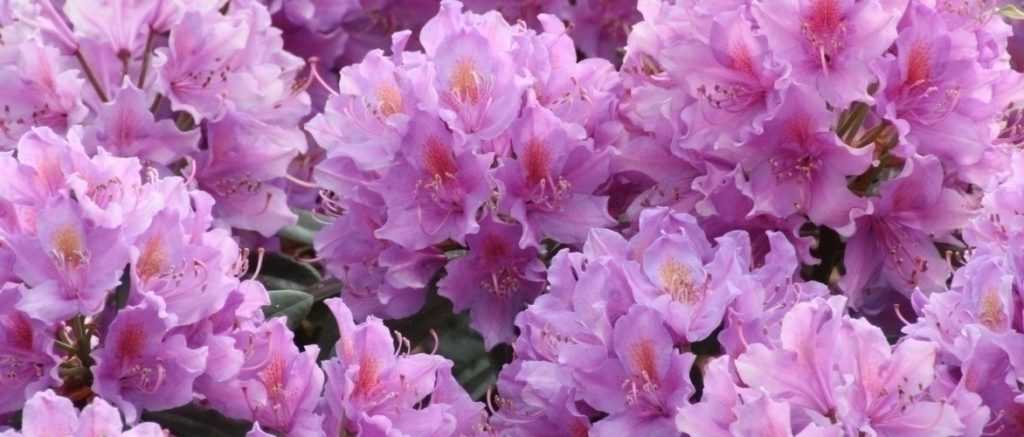
Rhododendron: Planting, Growing and Care
Contents
Rhododendrons in a Nutshell
- In May-June, they are covered in majestic flowers in varied colours
- They thrive in shade and acidic soil: they flourish in partial shade and ericaceous compost
- They maintain beautiful, glossy evergreen foliage all year round
- Although very slow-growing, they are extremely hardy, tolerating temperatures down to -25°C
- Versatile, they can be used in borders, as specimen plants or in containers
Our expert's advice
Rhododendrons are the stars of shady gardens: these essential heathland shrubs ensure a profusely flowering spring and early summer each year, with their abundance of large, delicate blooms that sometimes exude a sweet fragrance. Their handsome, glossy evergreen foliage provides the perfect setting for this exceptionally generous flowering and gives them real presence in the garden all year round.
Incredibly versatile, Rhododendrons can be used as standalone specimens, in informal hedges, or grouped at the edge or back of borders. They brighten up shady corners and form colourful, luminous hedges ranging – depending on the variety – from pale pink to white, carmine red to yellow or lavender, with every shade of pink in between.
Highly hardy, they thrive in light, acidic, lime-free soil that is moist but well-drained, where they grow sheltered from cold winds and waterlogging.
Very slow-growing but with a lifespan of up to a hundred years, they are well-suited to small gardens or urban spaces. The modest size of certain varieties, such as Rhododendrons yakushimanum or ‘rhodo yak’ and R. impeditum, which have produced many dwarf hybrids, makes them ideal for cool rockeries or container growing on a shaded terrace.
They are perfect companions for other heathland plants such as Azaleas, Camellias, Heathers, Hydrangeas, Andromedas… Planted with other Rhododendrons from the same group, they will create spectacular kaleidoscopes of spring blooms.
Remarkably floriferous, with their evergreen foliage, Rhododendrons are among the most beautiful heathland shrubs. Discover our collections of tall and dwarf Rhododendron varieties and let yourself be enchanted!
Botany and description
Botanical data
- Latin name Rhododendron
- Family Ericacées
- Common name Rhododendron, Rhodo, Azalée
- Flowering March to July
- Height 0.70 to 5 m
- Exposure Partial shade, shade
- Soil type Ericaceous (Acidic)
- Hardiness -25°C
Native to deciduous forests and mountainous regions of Europe, Asia and North America, Rhododendrons are shrubs belonging to the vast Ericaceae family, like heathers, Andromedas (Pieris) or Mountain Laurels (Kalmia latifolia).
The Rhododendron genus includes nearly a thousand species of evergreen, semi-evergreen or deciduous trees and shrubs, not counting the numerous hybrids: nearly 9,000 cultivars combining colour variety and hardiness. In botany, Rhododendrons are divided into four main groups: large-leaved, large-flowered evergreens commonly called Rhododendrons, deciduous or evergreen azaleas, Vireya (non-hardy tropical evergreen shrubs) and azaleodendrons, a group of very hardy semi-evergreen hybrids. Rhododendrons can also be classified by size: large (2 to 4 m), small (0.60 to 1.20 m), dwarf (30 to 60 cm) and prostrate with slow growth and horizontal spread, ideal as ground cover.
Although we still speak of Rhododendrons and azaleas as two distinct types of plants, they actually belong to the same botanical genus. Chinese azaleas or Japanese azaleas are small-leaved, sometimes deciduous rhododendrons rarely exceeding 1.5 m in height. Both bear trumpet-shaped flowers in bright, varied colours.
There are many varieties and hybrids of “true” Rhododendrons with widely varying habits and sizes.
Most ornamental evergreen Rhododendrons are derived from crosses between Rhododendron catawbiense, R. ponticum and R. caucasicum. These hardy hybrids have a generous, spreading habit, sometimes almost tree-like, like the famous Rhododendron ‘King George’. Vigorous, some have a tall, upright and airy growth, others are more compact. All form dense, floriferous bushes. In our latitudes, most species will not exceed 2-3 m in all directions, though some, favoured by the humid climate of Brittany or Normandy, can easily reach 5 to 8 m in height when mature. Conversely, small, low-growing varieties belong to the group of Rhododendrons yakushimanum or ‘rhodo yak’ and R. impeditum, which have produced many dwarf hybrids not exceeding 80 cm, forming very compact bushes perfect for borders, rockeries or even containers on a terrace.
Slow to establish, with generally slow growth, these shrubs need several years to fill out sufficiently and reach their full potential. They reach their mature size after about ten years. But they are worth the wait, as the older they get, the more beautiful they become. Their slowness is matched only by their exceptional longevity: Rhododendrons are potential centenarians that span generations!
Spectacular, abundant, their remarkable flowering gives these shrubs the appearance of fluffy clouds. In Greek, Rhododendron means “rose tree”, and it is in spring that they reveal their full colourful floriferousness, sometimes strongly scented: a visual as well as olfactory spectacle! The flowers are highly diverse in shape, size and colour. From March-April for the earliest, to early July for the latest, rhododendrons are entirely covered with flower buds that open into delicate, numerous flowers of varying sizes (from 2 to 15 cm wide and 2 to 10 cm long), in the shape of stars (‘Linearifolium’), tubular, trumpet-shaped (like the rare Rhododendron cinnabarinum) or bell-shaped with five lobes often marked with spots or dots that may resemble petunia flowers. Some resemble a flat cup or have nested corollas. Sometimes, the petal edges are prettily ruffled (‘Horizon Monarch’). Others have nectar pouches. Slightly satiny, they evoke porcelain. The flower throats host about ten beautiful stamens. Solitary or clustered at the ends of numerous stems, in groups of 10 to 20 in large round clusters sometimes up to 30 cm in diameter (‘Lem’s Monarch’), these corollas come in an infinite palette of solid, shaded or speckled tones ranging from white to lavender blue, through all shades of pink from pale to carmine, yellow, orange and scarlet red. The flower buds, in deeper shades, contrast beautifully with the paler open flowers, creating a lovely play of colour in the bush. A well-established shrub will produce abundant flower clusters on its branches. You can enjoy this staggered flowering for a good month, or longer by mixing varieties.
Most Rhododendron flowers have no scent, but some hybrids (‘loderi King George’, ‘Fragrantissimum’), exude a delightful fragrance of honeysuckle or daffodil. Particularly nectar-rich, they attract pollinating insects.
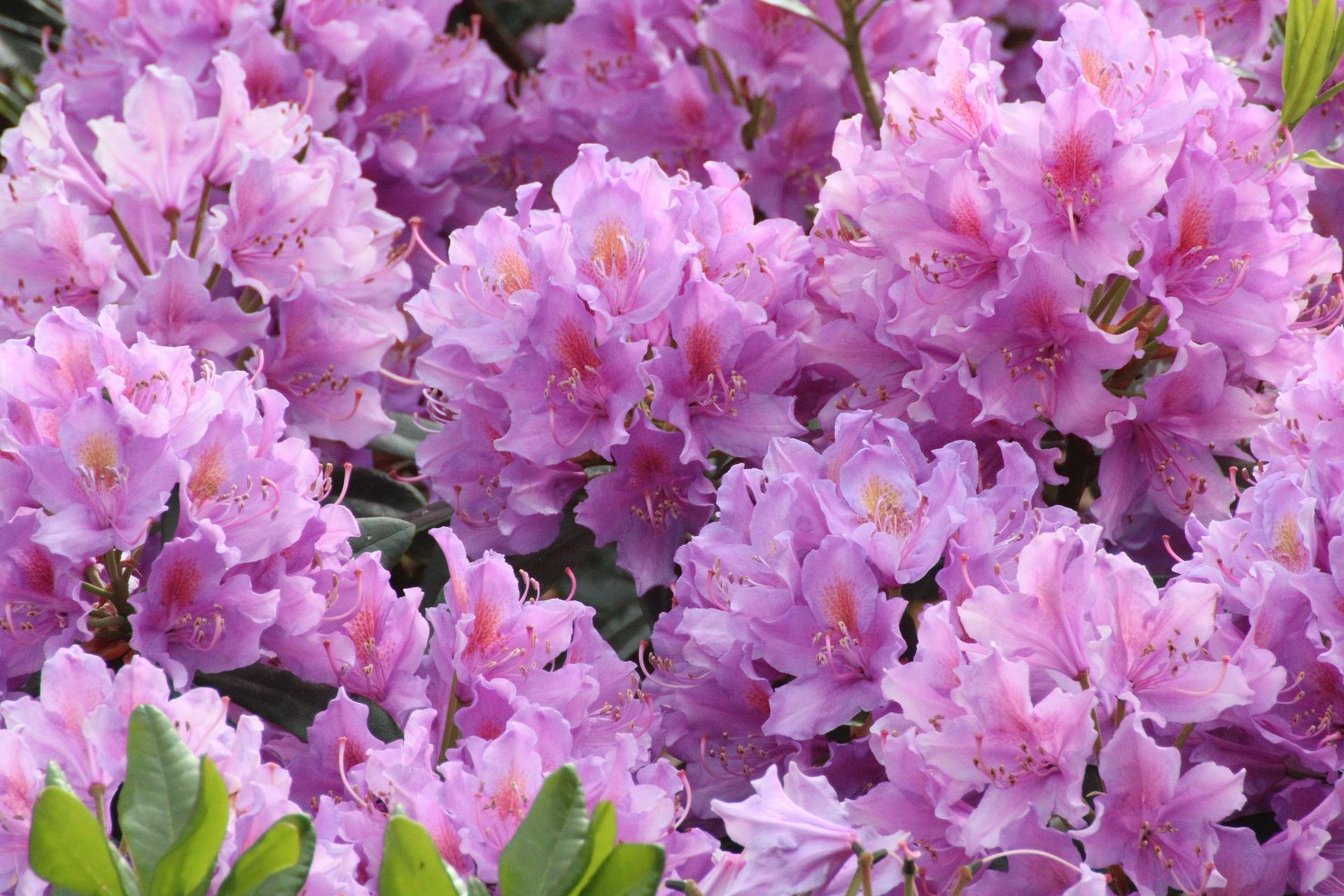
In rhododendrons, the graphic and elegant foliage remains attractive all year round, making these shrubs interesting even outside the flowering season. It provides a permanent green backdrop. The evergreen leaves are a beautiful glossy emerald green, lanceolate and leathery, with a marked lighter central vein reminiscent of laurel. They range from about ten centimetres long for dwarf species to nearly 40 cm for the largest. One foliage stands out in the Rhododendron genus, that of the R.’Linearifolium’, which has fine, elongated leaves. Abundant and vigorous, the foliage persists on the plant for two to three years. As it spreads, it adds a certain opulence to the plant. Some cultivars have pretty variegated yellow foliage (‘President Roosevelt’), others are covered with a woolly coating or are coloured red to bronze-brown or metallic blue-green.

Evergreen leaves of a beautiful glossy emerald green
Others still boast beautiful exfoliating bark ranging from pinkish-brown to cinnamon and silvery grey.
Demanding rather than capricious, “rhodos” can be quite…exclusive! They are not difficult to grow as long as they are planted in suitable soil and climate: they will then flower for decades with little maintenance. Although they can be planted almost anywhere in France, including at altitude, they have a clear preference for oceanic climates: they love coolness and high humidity and will only reveal their full splendour in cool, rainy climates.
Rhododendrons are the quintessential acid-loving plants: so-called “ericaceous”, they typically prefer woodland soil. If the soil does not suit them, they will decline. They absolutely need acidic soil (pH around 5.5), cool but well-drained and non-calcareous. Their shallow root system makes them quite sensitive to drying out during periods of intense heat. Very sensitive to excess water too, they fear stagnant moisture in heavy, asphyxiating soils. Some rare Rhododendron varieties are more tolerant of clay and limestone (Rhododendron hirsutum, ‘Inkharo’ range). All require soil rich in organic matter to flower well.
While they are demanding about soil type, they are relatively tolerant of exposure. They prefer bright positions but without direct sun during the hottest hours. We recommend planting them in non-scorching sun or partial shade. Rhododendrons are perfect for north or north-east facing gardens where they will benefit from morning or evening sun while being protected from excessive heat. Contrary to popular belief, they do not like deep shade which would limit their flowering: do not place them in competition with shrubs that could deprive them of light. In northern France, some very early hybrids even appreciate a sunny position. While they tolerate a light sea breeze, planting along a wall or in woodland, sheltered from cold, drying winds to protect their foliage and early flower buds is essential. On the other hand, they are not afraid of the cold. Perfectly hardy, they can withstand temperatures down to -20°C, sometimes more (-30°C for Rhododendron ‘Calsap’ and R. yakushimanum), provided they are planted in a sheltered position.
Highly versatile, Rhododendrons can be used as specimens, in pots, in informal hedges or in beds with perennials or other ericaceous shrubs such as Magnolias, Pieris, Heathers, Ferns, Kalmias, Azaleas, Hydrangeas and Japanese Maples which will continue the flowering spectacle. With other Rhododendrons from the same group, they will form spectacular kaleidoscopes of spring blooms. Their very slow growth and the modest size of some varieties allow for use in small hedges, cool rockeries, bed borders and even container cultivation: dwarf Rhododendrons (‘Dora Amateis‘, ‘Dream Land‘) will make attractive decorative subjects all year round. With their evergreen, glossy green foliage, they can play the role of boxwood.
Main species and varieties of rhododendrons
There are numerous varieties and hybrids of Rhododendrons, with widely varying habits and sizes, ranging from large dense bushes reaching 1.50m to 2m in height and spread at maturity – perfect for flowering hedges – to small or “dwarf rhododendrons” measuring 50 to 80cm tall, such as yakushimanum rhododendrons, ideal for cool rockeries, borders and containers.
Most Popular Species
-
Among Large Rhododendrons
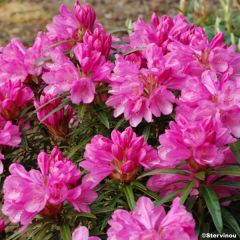
Rhododendron Graziella
- Flowering time June, July
- Height at maturity 1,50 m
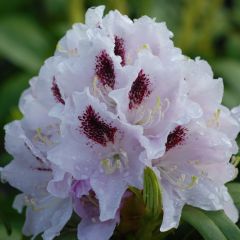
Rhododendron Calsap
- Flowering time April, May
- Height at maturity 1,30 m
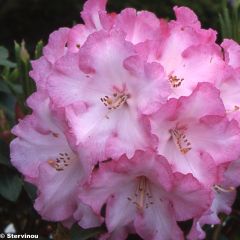
Rhododendron Lems Monarch
- Flowering time June, July
- Height at maturity 1,75 m
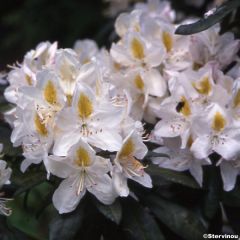
Rhododendron Madame Masson
- Flowering time May, June
- Height at maturity 1,40 m
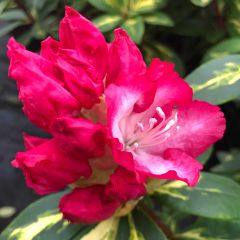
Rhododendron President Roosevelt
- Flowering time May, June
- Height at maturity 1,20 m
- Among Small Rhododendrons
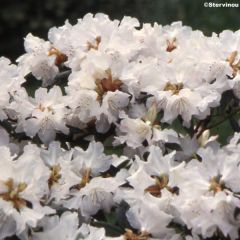
Rhododendron Dora Amateis
- Flowering time May, June
- Height at maturity 50 cm

Rhododendron Fragrantissimum
- Flowering time April, May
- Height at maturity 1 m
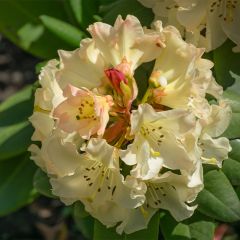
Rhododendron x yakushimanum Golden Torch
- Flowering time June
- Height at maturity 80 cm
Our Favourites
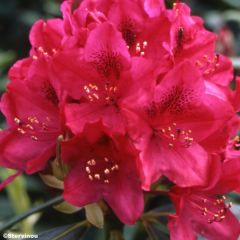
Rhododendron Nova Zembla
- Flowering time May to July
- Height at maturity 1,70 m
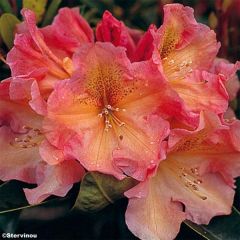
Rhododendron Olga
- Flowering time May, June
- Height at maturity 1 m

Rhododendron Horizon Monarch
- Flowering time May, June
- Height at maturity 1,80 m
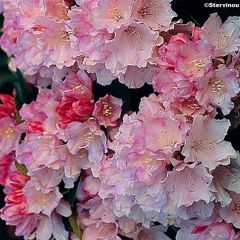
Rhododendron yakushimanum Dream Land
- Flowering time May, June
- Height at maturity 70 cm
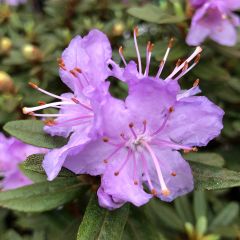
Dwarf Rhododendron - Rhododendron impeditum
- Flowering time April, May
- Height at maturity 50 cm
Other Interesting Varieties
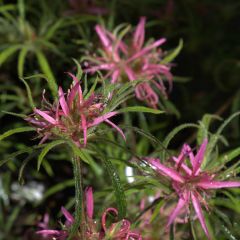
Rhododendron Linearifolium - Dwarf Rhododendron
- Flowering time April, May
- Height at maturity 80 cm
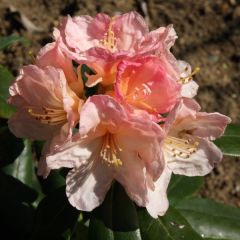
Rhododendron yakushimanum Percy Wiseman
- Flowering time May, June
- Height at maturity 1 m
To find out which rhododendron best suits your garden, check out our advice sheet: “Which Rhododendron to Choose?“
Discover other Rhododendron and Azalea
View all →Available in 1 sizes
Available in 1 sizes
Available in 1 sizes
Available in 1 sizes
Available in 2 sizes
Available in 1 sizes
Available in 2 sizes
Available in 2 sizes
Available in 1 sizes
Available in 2 sizes
Planting
When to Plant Rhododendrons?
Rhododendrons can be planted year-round, but planting in spring from March to April after the frosts or in autumn from September to October, after the hottest weather, will encourage better establishment.
Where to Plant Rhododendrons?
- Versatile, Rhododendrons suit all garden styles: they work equally well in mixed borders with perennials, at the edge of woodland, to dress a wall, in informal hedges, or alongside other acid-loving plants (Magnolias, Pieris, Camellias, Heathers, Kalmias, Azaleas, Hydrangeas, Japanese Maples), which will take over the flowering display in summer and autumn. They also thrive as standalone specimens or in pots on a shaded terrace. Plant taller varieties in sheltered wooded areas for hedging, while dwarf Rhododendrons (‘Dora Amateis’, ‘Dream Land’) suit cool rockeries or partially shaded borders.
- With very slow growth, these compact shrubs are ideal for small gardens or urban spaces.
- They prefer a shady spot, sheltered from strong winds, near a wall or under the dappled shade of tall trees. Avoid deep shade—they need light to flower well. Ideally, they favour north or north-west exposures.
- Plant Rhododendrons that bloom before May in areas sheltered from morning sun to prevent rapid thawing after an early frost, which could damage buds and new shoots.
Rhododendrons have specific requirements for garden planting: they need shade and acidity to thrive. They require acidic soil with a pH below 6, rich in humus, ideally resembling ericaceous compost and never lime-rich.
Rhododendrons dislike extremes!
They also dislike heavy, compacted, waterlogged soils and prefer fresh ground where water never stagnates: they are highly sensitive to excess moisture, so avoid waterlogged areas, especially in winter. Overwatering increases the risk of Phytophthora infection, which can kill them suddenly and completely. Conversely, they fear summer drought: use ground covers like heathers to keep the soil cool during heatwaves.
Highly hardy, they tolerate cold well, withstand frost, and can survive temperatures as low as -30°C for some species. They cope with coastal air but dislike storms and cold winds that scorch their evergreen foliage. Vigorous, they grow almost everywhere in France, except perhaps in Mediterranean climates. Their ideal climate? The cool, humid conditions of Brittany, where they thrive spectacularly! But some more adaptable varieties (R. Bloombux, like others in the Inkharo range) break free from ericaceous soil and coastal constraints!
How to Plant a Rhododendron?
Planting is the crucial step! The secret lies in soil quality. If your soil is too lime-rich or heavy, improve it with ericaceous compost—or simply accept the “Rhodo’s” elitist nature and opt for a less demanding shrub. Otherwise, you’ll face frequent soil amendments, only to end up with a weak, disease-prone plant.
- Avoid lime-rich soil: it won’t survive. If you still want to try: replace the excavated soil with a mix of ericaceous compost, leaf mould, and peat. Lime soils cause chlorosis (yellowing foliage), often fatal. Alternatively, line the planting hole with a root barrier to block lime.
- Avoid waterlogged spots: add gravel, pumice, or clay pebbles at the base for drainage.
- Soak the rootball for 10–15 minutes before planting.
- Dig a hole 3 times wider than the pot and 40–50 cm deep—planting too deep harms them.
- Set the shrub at root level in a mix of 1/5 garden soil blended equally with peat, ericaceous compost, leaf mould, and pumice.
- Mulch with 8–10 cm of pine bark or plant small perennials to protect roots and reduce watering—they like cool roots in summer.
- Water regularly with lime-free water (rainwater), 2–3 times weekly for the first fortnight to keep soil moist. In their first summer, water deeply during droughts.
Growing Rhododendrons in Pots
Container cultivation is an option. Choose dwarf varieties like R. ‘Dream Land’ or ‘Dora Amateis’—their compact size suits pots perfectly. They’ll thrive for years in a large container filled with a fresh, well-draining mix of true ericaceous compost, well-rotted leaf mould, and lime-free garden soil, kept consistently moist. Use a 30-litre pot (30–40 cm diameter) with a gravel or clay pebble base. Potted Rhododendrons won’t tolerate even brief drought—they need year-round watering with rainwater only. Mulch or plant small perennials to retain moisture.
Find more tips in our planting guide: “Rhododendron: Planting Success”
Rhododendron Care
Maintaining an established rhododendron requires a few simple yet essential steps to ensure its vitality and spectacular flowering. Here’s how to care for these magnificent shrubs:
Soil Fertilisation and Amendment
At the end of winter, in early spring, enrich the soil by gently incorporating compost around the base of the plant—this should be done annually or biennially. A fertiliser specifically formulated for acid-loving plants can also improve soil fertility, supporting the rhododendron’s growth and flowering.
Mulching
To protect the rhododendron’s sensitive roots and retain soil moisture, apply a thick layer of organic mulch, such as bark or pine needles, or a blanket of leaves. Renewing this mulch each year is crucial for keeping the soil cool during the hot summer months.
Watering
Preferably use rainwater to water your rhododendron, ensuring the soil does not become waterlogged. During summer, moderate watering—two to three times a month—will provide sufficient hydration without excess.
Pruning
Pruning is generally unnecessary for rhododendrons. Only intervene to remove dead branches or perform light thinning in late summer to maintain a balanced shape. For ageing or sparse specimens, rejuvenation pruning can be carried out in March, reducing the shrub to about 1 metre in height. Patience is key, as flowering may take 2 to 4 years to resume.
Flower Maintenance
After flowering, remove spent blooms to encourage new flower buds for the following year, ensuring abundant and prolonged flowering.
→ To deepen your knowledge of rhododendron care, including pruning techniques, disease management, and general maintenance, feel free to explore our comprehensive guide: “Rhododendron: Pruning, Diseases, and Care“.
Possible diseases
When grown under good conditions, Rhododendrons are generally quite resistant to diseases and pests.
They may occasionally be attacked by vine weevils, which feed on leaf edges and rootlets, as well as the notorious “rhododendron bug” (Stephanitis rhododendri), which usually causes only minor damage.
They are primarily susceptible to fungal diseases caused by moulds. These issues typically arise from poorly drained soil or stagnant moisture around the roots. Their main enemy: Phytophthora, a soil-borne fungus whose attack can kill them as suddenly as it is devastating. The foliage discolours, turns brown or red, then withers. The plant then dies rapidly. There is no effective treatment, but these problems are rare if proper cultivation advice is followed: plant in healthy soil, avoid waterlogged conditions, and improve drainage. If, despite precautions, an attack occurs: remove affected plants and the surrounding soil. Never replant susceptible species in the same spot.
Rhododendron leaves discolour and turn yellow due to excess lime (chlorosis). The culprit may simply be the watering water. Water only with rainwater.
Rhododendrons can also be affected by powdery mildew and spider mites, which damage the foliage.
→ Learn more about Rhododendron diseases and pests in our advice guide!
Propagation
By Layering
This is the simplest and quickest method to propagate Rhododendrons. However, you’ll need patience: root development is very slow.
- In October, bend a low branch towards the ground, covering about 20 cm.
- Remove leaves from this point. Make a fine incision on the inner side of the exposed branch to remove a sliver of bark.
- Dig a hole 7 to 10 cm deep, half-filled with moist compost.
- Bury the wounded section to encourage rooting.
- Stake the aerial part and cover with compost.
- Water the layer generously.
- After two years, in autumn or spring, you can separate the layer from the parent plant if it has sufficient roots, by cutting the stem where it enters the ground. Plant it directly for flowering the following summer.
→ Learn more in How to Easily Layer a Rhododendron?
By Semi-Hardwood Cuttings
Great for producing many new plants, though success isn’t guaranteed!
- After flowering, between July and September, take 10-20 cm semi-hardwood cuttings (from stems that grew in spring and are starting to harden from July-August).
- Remove all leaves from the lower part and make a clean cut just below a leaf node.
- Strip the bark for 2-3 cm.
- Plant in a light, well-draining substrate. Mist the cuttings regularly.
- Pot them up once roots have formed.
- Overwinter frost-free: a constant temperature of at least 20°C is essential for rooting within 8-10 weeks.
- Plant out the following spring if root development is sufficient.
→ Also read: how to easily take rhododendron cuttings?
How to combine rhododendrons in the garden?
Highly versatile, Rhododendrons can be used in mixed hedges with other ericaceous shrubs, in borders with perennials, as standalone specimens, and even in pots: plant taller varieties in sheltered spots to create an informal hedge or adorn a wall. They make perfect companions for other acid-loving plants such as Magnolias, Pieris, Heathers, Ferns, Kalmias, Azaleas, Hydrangeas, Japanese Maples, Camellias, or Hostas, extending the floral display. Paired with other Rhododendrons from the same group, they create spectacular kaleidoscopes of staggered blooms. Their slow growth and compact size make them ideal for small hedges, cool rockeries, border plantings, and even container cultivation: dwarf Rhododendrons (‘Dora Amateis’, ‘Dream Land’) serve as charming year-round features. With their glossy evergreen foliage, they can even substitute for boxwood.
Need more inspiration? Check out our companion planting guide: “Rhododendron: 9 Winning Plant Combinations”
Useful resources
- Discover rhododendrons at the National Botanical Conservatory of Brest
- Advice sheet: Rhododendrons: The Best Varieties
- Advice sheet: Dwarf Rhododendrons and Azaleas: The Best Varieties; 7 Dwarf Rhododendrons for Small Gardens and Pots
- Plant sheet: Azaleas: Planting, Growing, Pruning and Care
- Advice sheet: Rhododendrons: How to Grow Them in Pots
- Advice sheet: Rhododendron: 9 Successful Planting Combinations
- Advice sheet: Rhododendron: Pruning, Diseases and Care
- Advice sheet: Which Rhododendron Should You Choose?
- Advice sheet: Rhododendron: Planting Success Guide
- Discover our video on Rhododendron luteum:
Frequently asked questions
-
My rhododendron hasn't grown in two years since planting - should I be concerned?
That's normal. Slow-growing, the rhododendron is very sluggish when establishing itself: its roots develop very slowly in the soil. It will take many years to see it form a proper shrub. A patience rewarded by its truly unique flowering!
-
Should I prune my rhododendron?
It's unnecessary. Only intervene to remove any dead branches or to perform, at the end of summer, a very light trim above a bud to maintain a balanced shape. Old neglected shrubs or those that have become too bare at the base can be cut back in March, using a saw, to about 1 m from the ground. After this severe pruning, you'll need to wait 2 to 4 years for it to flower again.
-
My rhododendron is losing its leaves which are turning yellow. Why?
Rhododendrons benefit from an annual top dressing of well-rotted compost and leaf mould – the soil may simply be too poor for them. Being lime-intolerant, their leaves will discolour and turn yellow if there's excess lime in the soil (chlorosis). Hard tap water can also be the culprit. Water only with rainwater.
-
I have slightly chalky soil, can I still plant a rhododendron?
Yes, but it's not a sure thing! Rhododendron leaves discolour and turn yellow when there's too much lime (chlorosis). If your soil is too chalky, opt for either Inkarho Rhododendrons or choose a less demanding shrub when it comes to soil type – otherwise, you'll need frequent additions of ericaceous compost, only to end up with a weak, disease-prone plant. If you still want to give it a try despite this, prepare the soil with an equal mix of ericaceous compost or peat, potting soil, and topsoil, then line the bottom and sides of the planting hole with a permeable membrane to prevent lime from leaching back in.
-
The leaves of my rhododendron have brown spots and are falling off abnormally, what should I do?
This is very common in rhododendrons. These brown spots are caused by what we call the "rhododendron bug", a small insect that devours the leaves and rarely causes serious damage. To limit the infestation: spray a solution based on clay or black soap.
- Subscribe!
- Contents


































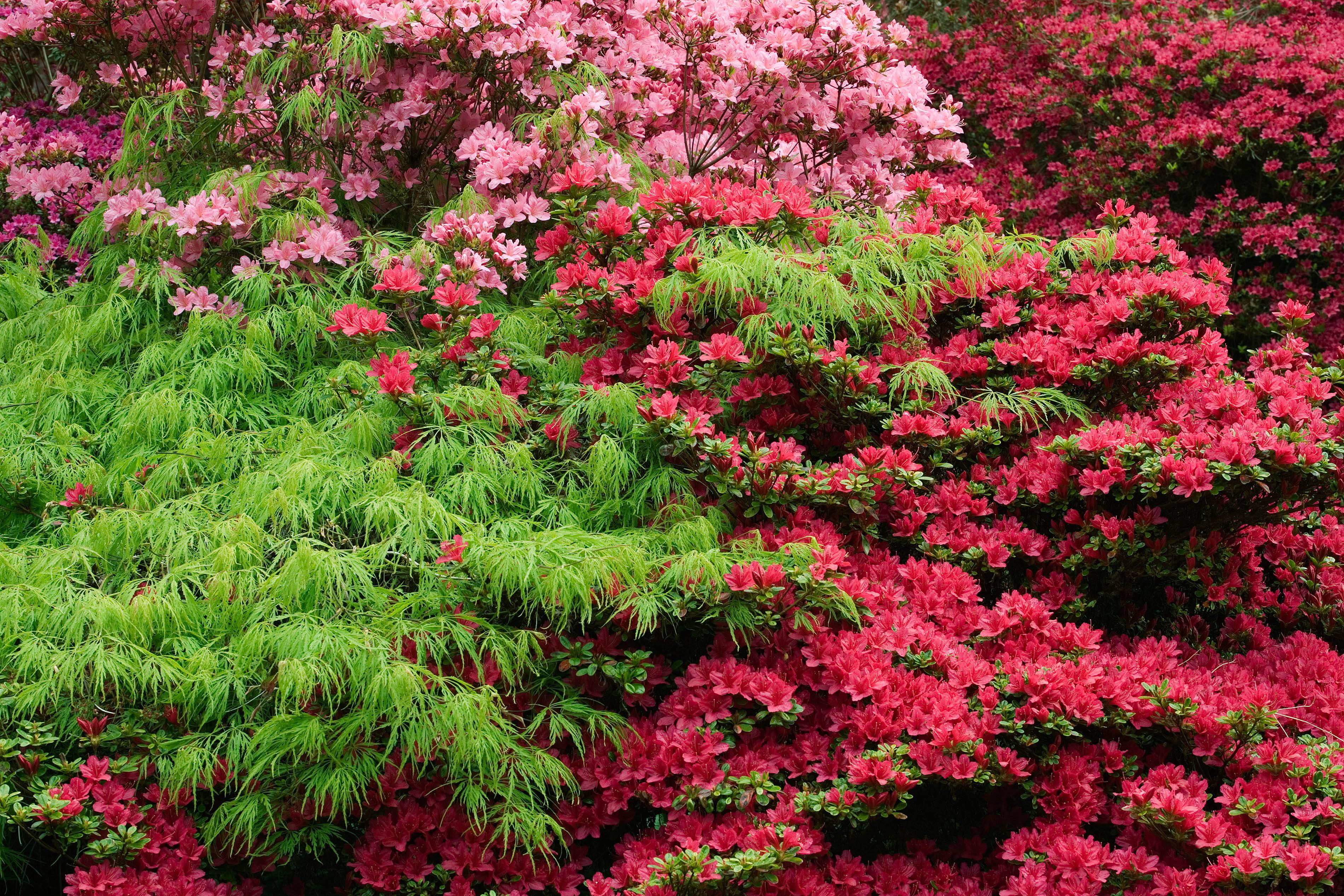
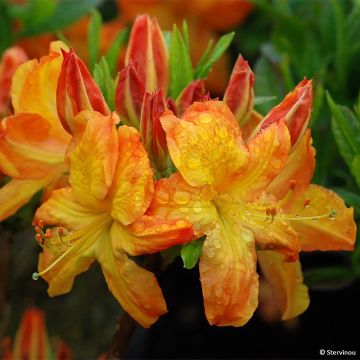
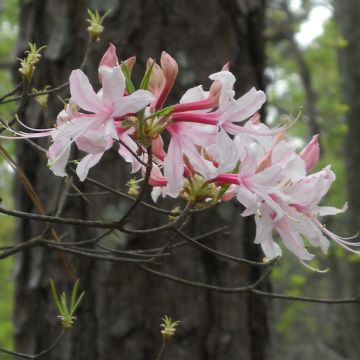

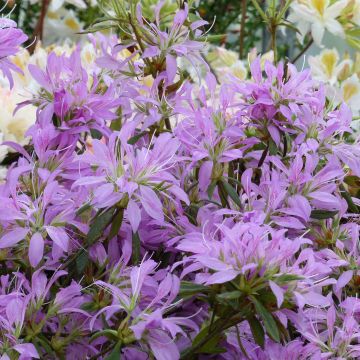

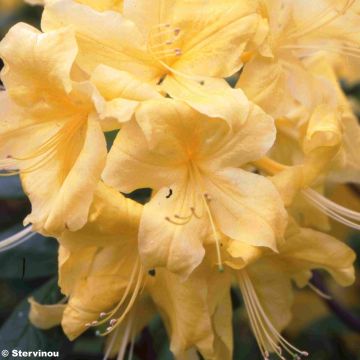
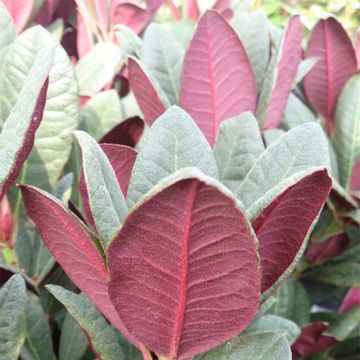
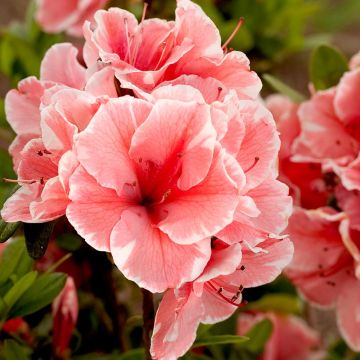

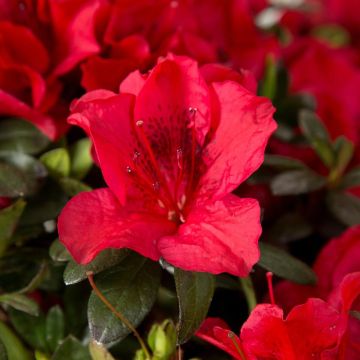

Comments